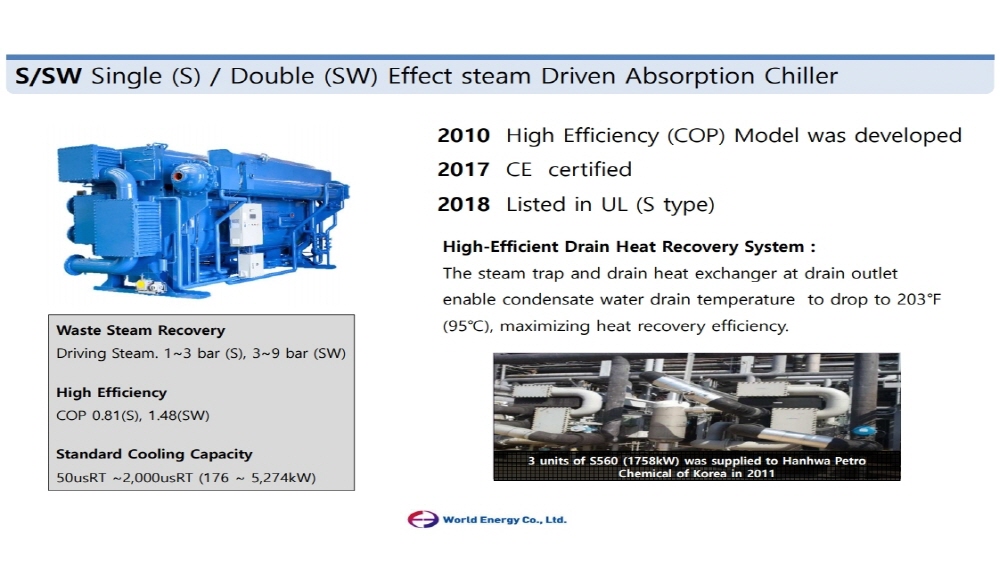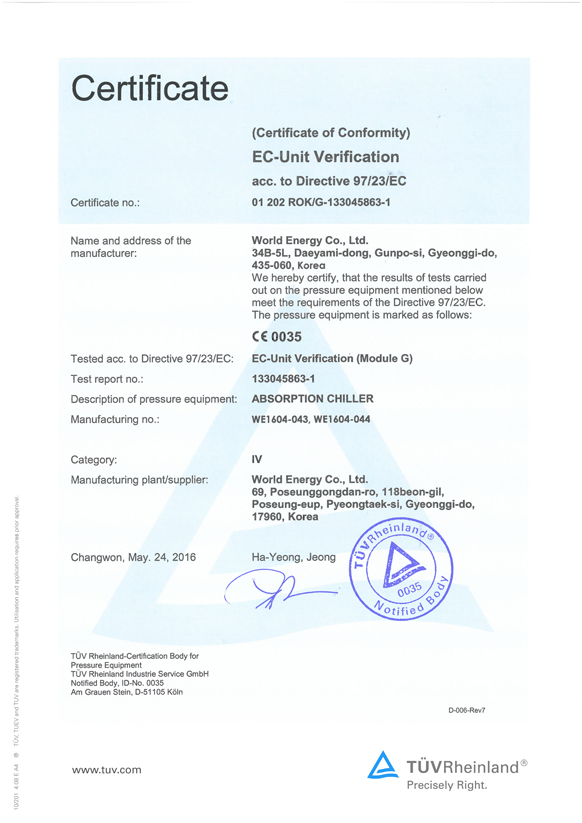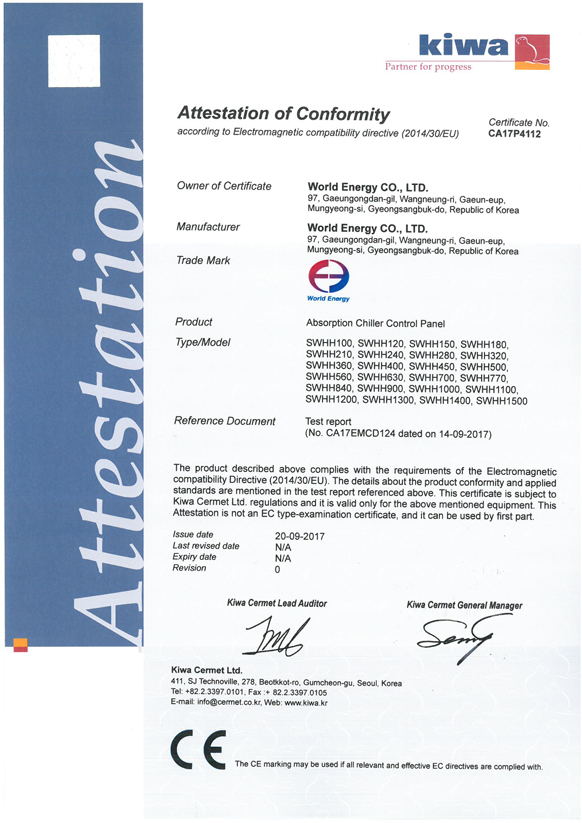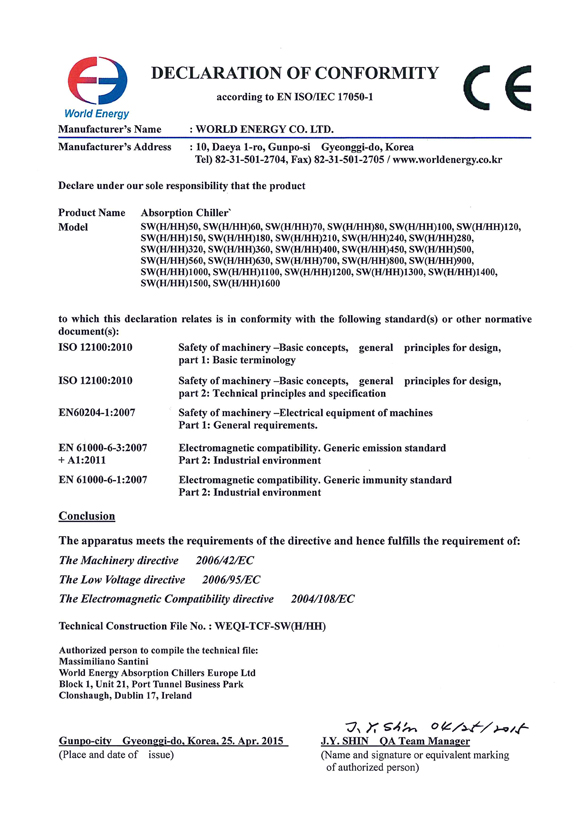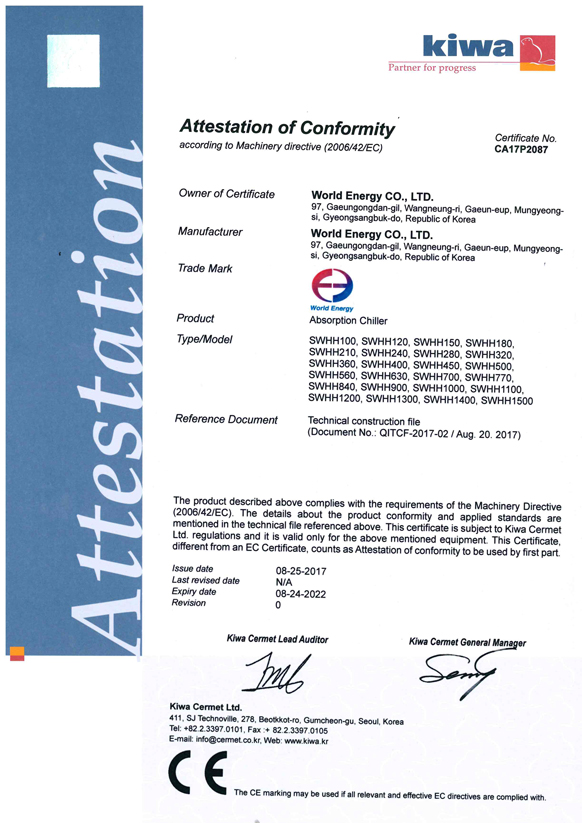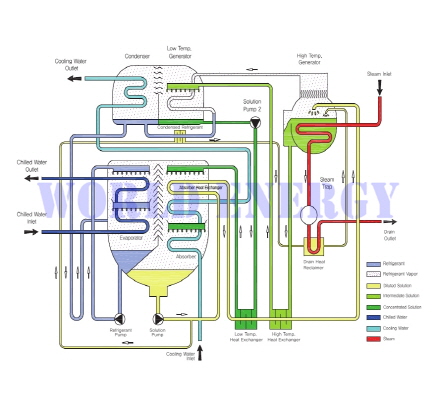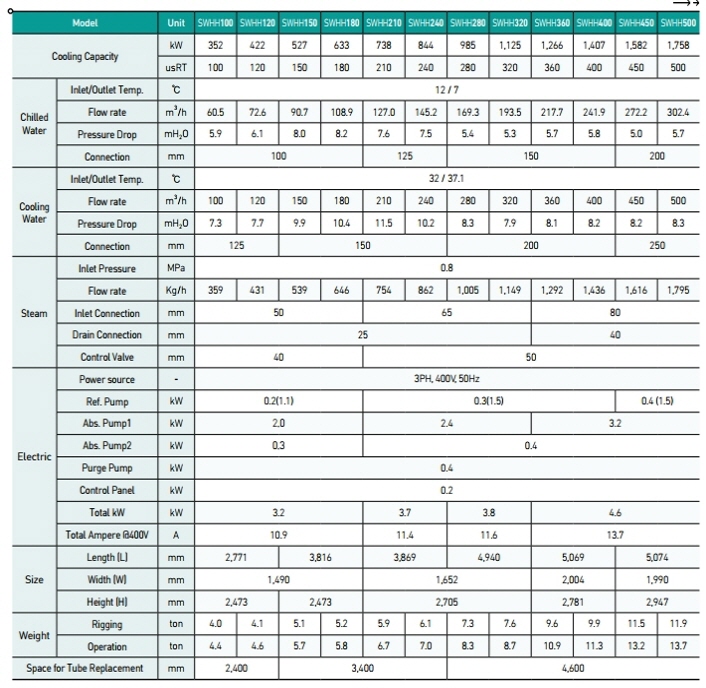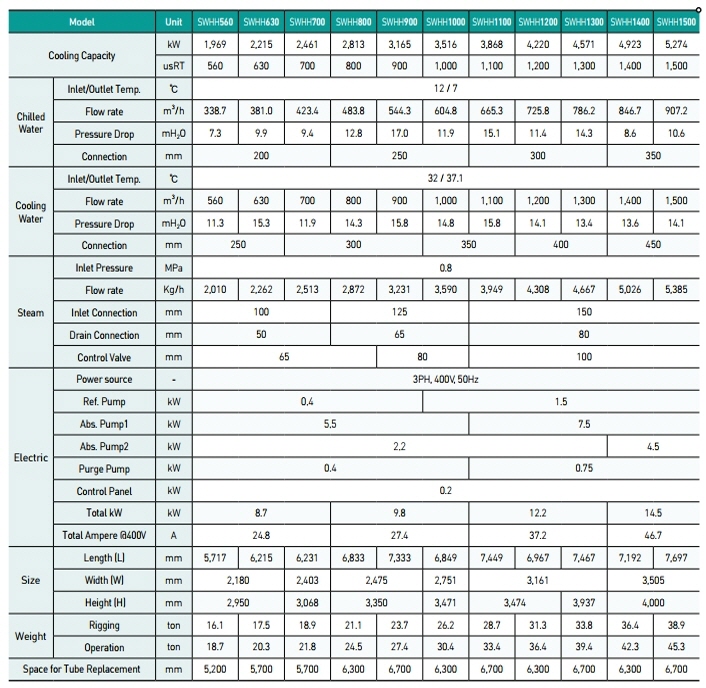SW
Double Effect Steam Driven Absorption Chiller

Achieve high efficiency and energy conservation through applying inverters
We controlled the solution circulation rate optimally through controlling absorption liquid pump inverters to greatly improve the partial load efficiency enabling energy-saving operation. We also greatly reduced the time to reach the rated cooling capacity through controlling the absorption liquid circulation rate optimally.· We use evaporators and high-performance special absorber tubes and can achieve high efficiency through the best tube arrangement (high-efficiency chillers) · high-performance solution heat exchangers (high-efficiency chillers) · minimize the installation area, and greatly reduce operational costs
Improve durability through structure design
to prevent the bursting of heat tubes
In order to prevent the bursting of heat tubes because of heat tube resonance occuring while rapidly exchanging heat in high-temperature generators, we increased the durability of chillers through scientifically designing them to stop the resonance of heat tubes. High-efficiency drain heat retrieving system
We installed steam traps and drain heat exchangers to promote elimination of just condensed water (but not steam) through drain outlets of high-temperature generators. In this way, the temperature of condensed water drains drops to lower than 95℃, maximizing the efficiency of chillers through raising drain heat recovery.Construction of a high-efficiency steam-type double effects absorption chiller cycle
The body of a chiller is constructed by an evaporator, the lower part of an absorber, a condenser, upper part of a low-temperature generator, a high-temperature generator, a high-temperature heat exchanger, a low-temperature heat exchanger, solution (dilute and concentrated solution), a refrigerant pump, a steam trap and a heat retriever.
Refrigerants which are evaporated after cooling cold water within an evaporator are absorbed into a highly concentrated absorption liquid within an absorber. At this time, the absorption liquid becomes weakened (a dilute solution).
The solution whose concentration becomes weakened within the absorber (a dilute solution) comes into a high-temperature generator through a low-temperature heat exchanger and a high-temperature heat exchanger at higher temperature by means of a solution pump and is heated with high-temperature and high-pressure steam and is concentrated to middle density.
The middle-concentrated solution comes into a low-temperature generator through a high-temperature heat exchanger and is concentrated to become a thick solution (a concentrated solution) by refrigerant vapor generated at a high-temperature generator. After this, the solution returns to an absorber at a lower temperature through a low-temperature heat exchanger, repeating the absorption process.
In the process, steam supplied to a high-temperature generator heats solution of the generator, passes through a drain heat retriever installed to produce heat exchanging with the solution through a steam trap of a drain outlet, and then discharges steam condensate after lowering its temperature to less than 95℃, improving the chiller efficiency by enhancing drain heat recovery.
Construction of a high-efficiency steam-type double effects absorption chiller cycle

